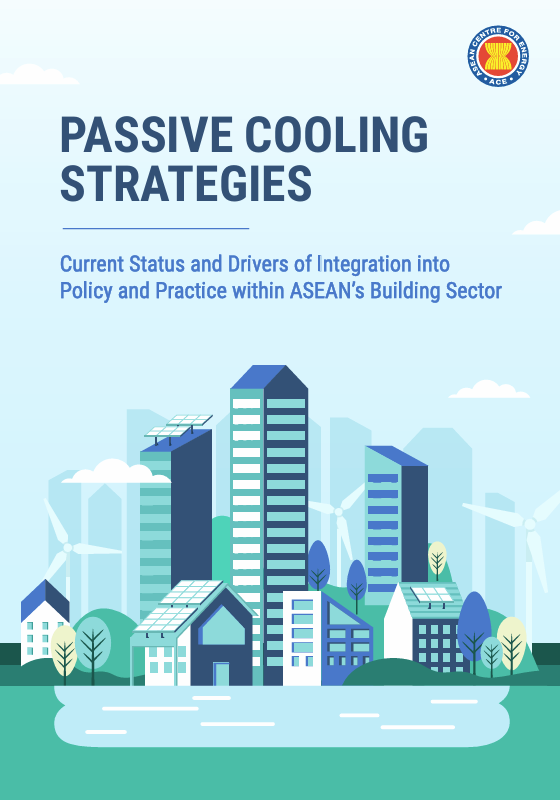Passive cooling strategies
 |
Current status and drivers of integration into policy and practice within ASEAN's building sector
rapport Sep 2024 ; 54 pages
Aut. Rio Jon Piter Silitonga & Vu Trong Duc Anh & Irma Ramadan
Ed. ACE - Jakarta
Téléchargeable sous format: PdF
Téléchargeable chez l'éditeur
Abstract:
The report underscores the importance of embedding passive cooling strategies within the ASEAN Plan of Action for Energy Cooperation (APAEC) 2021-2025. It calls for sustained collaboration among stakeholders to tackle existing challenges and promote sustainable building practices. The f indings reveal that passive cooling strategies are underutilized despite their significant potential to reduce energy consumption and greenhouse gas emissions. Contents:
I. Introduction 1
I.1 Introduction to Passive Cooling Principles and Design Approaches 1
I.2 Benefits of Passive Cooling Strategies2
II. CURRENT TRENDS IN THE ASEAN BUILDING SECTOR AND THE RISING DEMAND FOR COOLING 5
II.1 Building Floor Space Trends and Projections 5
II.2 Space Cooling Penetration Rates and Projections 7
II.3 Space Cooling-Related Energy Demand Trends and Projections 8
III.PASSIVE COOLING STRATEGIES WITHIN THE ASEAN CONTEXT 9
III.1 Rising Demand for Space Cooling in the ASEAN Context 9
III.2 Passive Cooling in Hot and Humid Climates 10
III.3 Technologies and Architectural Design Elements 11
III.4 Modelling Approach: Passive Cooling Modalities 13
III.5 Modelling Results: Passive Cooling Strategies across Urban and Rural Settings and Varying Climatic Zones 14
IV. CURRENT STATUS OF REGULATORY INTEGRATION, ENFORCEMENT AND INCENTIVES 27
IV.1 Introduction of Passive Cooling Policy “Indicators” 27
IV.2 Mapping of Passive Cooling Integration into National Policy in ASEAN, by Country 29
V. INFLUENCING FACTORS ON THE UPTAKE OF PASSIVE COOLING STRATEGIES 33
V.1 Architectural Trends and Preferences 33
V.2 Market Awareness through Green Building Certification 35
V.3 Building Material Supply Chains 38
VI. RECOMMENDATION FOR PASSIVE COOLING IN ASEAN 41
VI.1 Regulatory Enforcement 41
VI.2 Policy and Planning Integration 42
VI.3 Awareness and Education 42
VI.4 Incentives 42
II. References 43
Public-Cible:
Mot clef: |
efficacité énergétique et bâtiments durables (CI) (DT) (OP) (ope) |
Pays concernés: |
Birmanie-Myanmar (CI) (DT) (OP) , Bruneï (CI) (DT) (OP) , Cambodge (CI) (DT) (OP) , Indonésie (CI) (DT) (OP) , Laos (CI) (DT) (OP) , Malaisie (CI) (DT) (OP) , Philippines (CI) (DT) (OP) , Singapour (CI) (DT) (OP) , Thaïlande (CI) (DT) (OP) , Timor Oriental (CI) (DT) (OP) , Vietnam (CI) (DT) (OP) |
Editeur/Diffuseur: |
|
ACE
-
Asean Center for Energy - Jakarta - Indonésie |
En cas de lien brisé, nous le mentionner à communication@pseau.org